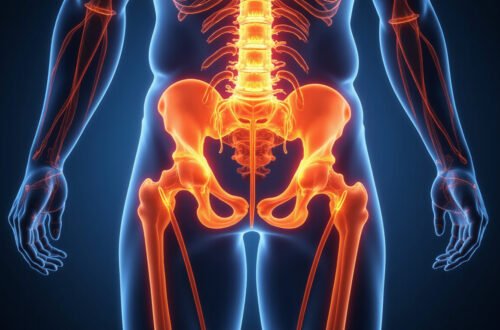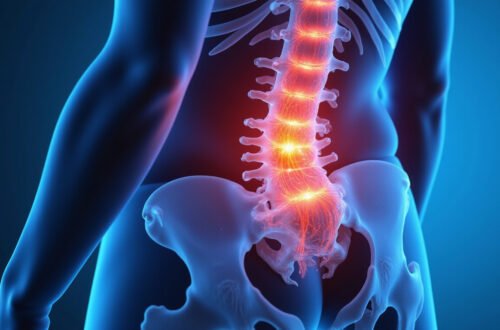Pain management is an essential aspect of maintaining a healthy, active lifestyle, especially for those living with chronic pain conditions.
While there are many approaches to managing pain, one gentle and effective method is through the practice of Tai Chi.
Originating in ancient China, Tai Chi is often referred to as ‘meditation in motion’ and has gained recognition not only for its physical benefits but also for its potential to alleviate pain.
In this article, we will explore the principles of Tai Chi for pain management, review scientific evidence supporting its effectiveness, and provide guidance on how to incorporate this ancient practice into your pain relief regimen.
Whether you’re looking for a new way to manage discomfort or seeking a holistic approach to wellness, Tai Chi might just be the gentle path to relief you’ve been searching for.
Your Sciatica Pain-Free Future Starts Here – Click to Learn More!
Key Takeaways
- Tai Chi, rooted in ancient Chinese traditions, promotes gentle movement and mindfulness.
- Effective pain management requires a holistic understanding of pain and its impacts on the body and mind.
- The principles of Tai Chi, including balance and relaxation, can directly contribute to pain relief.
- Numerous scientific studies support the efficacy of Tai Chi as a viable method for managing chronic pain.
- Getting started with Tai Chi can be simple and accessible, making it a practical option for those seeking relief.
Introduction to Tai Chi and Its Origins
Tai Chi, often described as ‘meditation in motion,’ is a centuries-old practice originating from ancient China.
It is a martial art that combines slow, deliberate movements with deep breathing and mindfulness, making it an ideal exercise for enhancing both physical and mental well-being.
Over the years, many have discovered the benefits of Tai Chi for pain management, particularly those suffering from chronic conditions such as arthritis, lower back pain, and fibromyalgia.
The gentle, flowing movements can help improve flexibility, strength, and balance, all while promoting relaxation and reducing stress.
By engaging in regular practice, individuals not only experience a greater sense of tranquility but also find significant relief from pain, thanks to the meditative aspects and low-impact nature of Tai Chi.
Understanding Pain and Its Management
Pain is a complex experience that can stem from various physical or psychological factors, affecting individuals in different ways.
Understanding pain is essential, as it allows us to explore effective management strategies.
One such approach gaining popularity is tai chi for pain management.
This ancient Chinese martial art combines gentle movements, meditation, and breathing exercises to enhance physical and mental well-being.
Research has shown that tai chi can be particularly beneficial for individuals suffering from chronic pain conditions, such as arthritis, fibromyalgia, or back pain.
By incorporating tai chi into a daily routine, practitioners not only improve their flexibility and balance but also reduce pain levels and enhance overall quality of life.
This holistic practice encourages mindfulness and stress reduction, making it an ideal complement to traditional pain management methods.
Engaging in tai chi regularly can empower individuals to take control of their pain, fostering resilience and a greater sense of peace.
‘The body achieves what the mind believes.’ — Unknown
The Principles of Tai Chi in Pain Relief
Tai Chi is an ancient Chinese martial art that is increasingly recognized for its benefits in pain management.
The principles of Tai Chi for pain management revolve around its gentle movements, which promote relaxation and enhance flexibility.
This practice encourages mindfulness and deep breathing, allowing practitioners to engage in low-impact physical activity that can actually alleviate chronic pain.
By focusing on slow, controlled motions, Tai Chi helps improve circulation and joint mobility, making it an excellent choice for individuals suffering from conditions such as arthritis or chronic back pain.
Furthermore, recent studies have shown that regular participation in Tai Chi can reduce stress and anxiety levels, contributing significantly to an overall sense of well-being, which is crucial in any pain relief strategy.
Your Sciatica Pain-Free Future Starts Here – Click to Learn More!
Scientific Evidence Supporting Tai Chi for Pain Management
Tai Chi for pain management has gained significant attention in recent years, bolstered by a growing body of scientific evidence supporting its effectiveness.
Multiple studies have demonstrated that this ancient Chinese martial art, characterized by slow, gentle movements and deep breathing, can lead to reduced pain levels in individuals suffering from various conditions, including arthritis, fibromyalgia, and chronic back pain.
A systematic review published in Pain Medicine found that participants who practiced Tai Chi experienced greater decreases in pain and improved quality of life compared to those who did not engage in the practice.
Furthermore, research has shown that Tai Chi promotes better flexibility, balance, and muscle strength, which play vital roles in managing pain symptoms and preventing future injuries.
With its low-impact nature, Tai Chi is accessible to people of all ages, making it a valuable addition to pain management strategies.
How to Get Started with Tai Chi for Pain Relief
Tai Chi for pain management is an excellent way to explore gentle movement while finding relief from chronic discomfort.
This ancient Chinese martial art combines slow, flowing motions with deep breathing, which can significantly help to alleviate pain and improve overall well-being.
To get started, find a local class or online tutorial that introduces beginners to the fundamental movements—these should focus on relaxation and gentle stretching rather than intense exercise.
Start with just a few minutes each day, gradually incorporating longer sessions as you grow more comfortable.
Additionally, consider incorporating meditation and mindfulness practices to enhance your experience.
Remember, the key to using Tai Chi for pain management is consistency; even small, daily practices can lead to significant improvements in your pain levels over time.
FAQs
What is Tai Chi and how does it relate to pain management?
Tai Chi is a traditional Chinese martial art that focuses on slow, gentle movements and deep breathing.
It is known for its ability to promote relaxation and overall well-being, making it an effective method for managing chronic pain through improved flexibility, strength, and mindfulness.
Is there scientific evidence supporting the use of Tai Chi for pain relief?
Yes, numerous studies have shown that Tai Chi can be beneficial for pain management, particularly for conditions like arthritis, fibromyalgia, and chronic low back pain.
Research indicates that it can improve physical function and reduce pain levels over time.
How can a beginner get started with Tai Chi for pain management?
Beginners can start by finding a local Tai Chi class or online tutorial that focuses on gentle movements and pain relief.
It’s important to choose a class that is suitable for beginners and to consult with a healthcare provider before starting any new exercise regimen.
Are there any specific Tai Chi movements that are particularly beneficial for managing pain?
Certain Tai Chi forms, such as ‘Commencing Form’, ‘Cloud Hands’, and ‘Parting the Horse’s Mane’, are often recommended for their gentle nature and the way they promote relaxation, balance, and flexibility, helping to relieve pain.
Is Tai Chi safe for everyone, including those with chronic pain conditions?
Generally, Tai Chi is considered safe for most people, including those with chronic pain conditions.
However, individuals should consult their healthcare provider before starting to ensure it is appropriate for their specific situation, especially if they have any health concerns or limitations.






